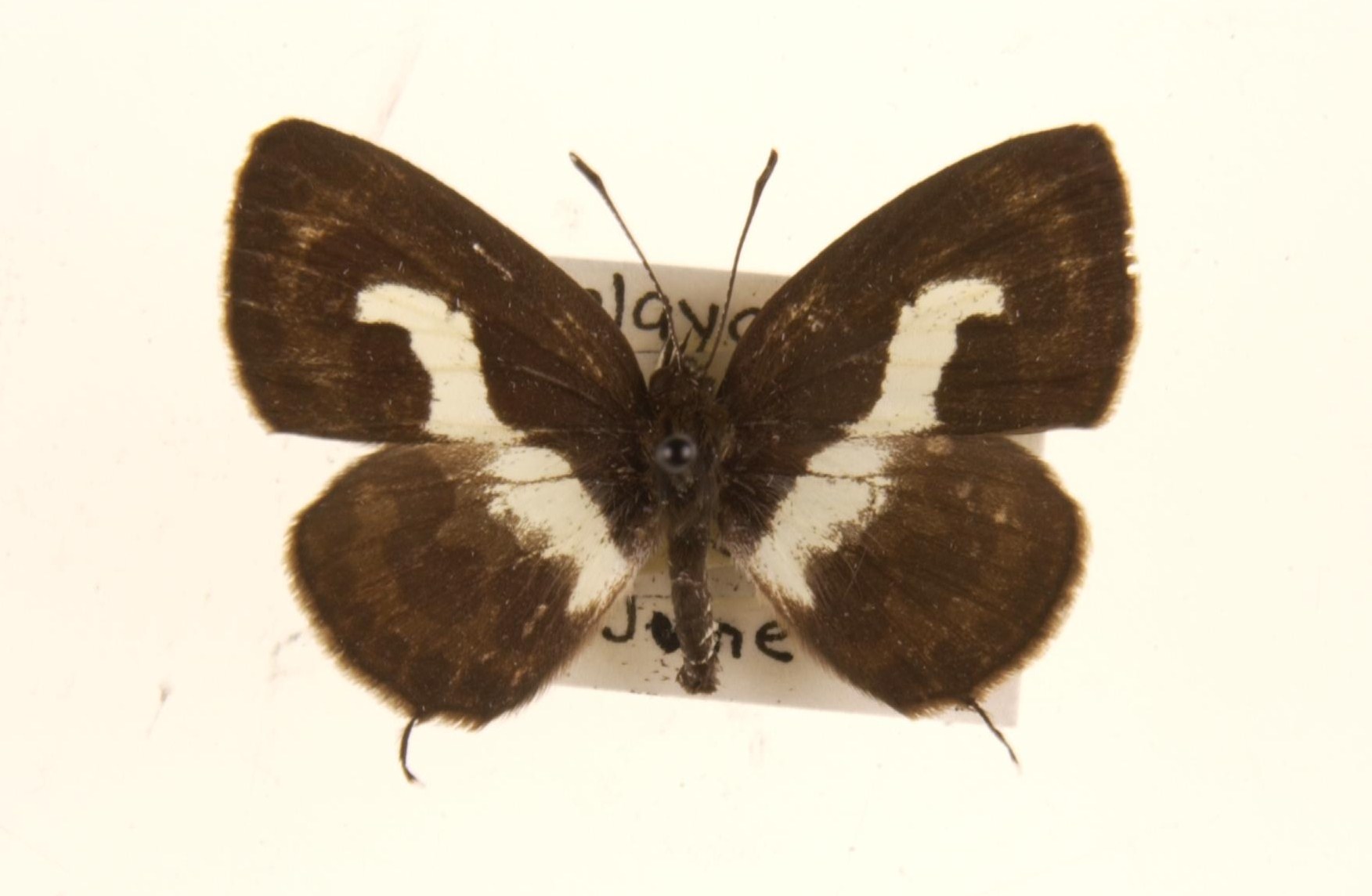- Pycnophallium roxus
Taxobox
name = Straight Pierrot

image_width =230px
image_caption =Upperside. Museum specimen. Malaya.
regnum =Animal ia
phylum =Arthropod a
classis =Insect a
ordo =Lepidoptera
superfamilia =Papilionoidea
familia =Lycaenidae
genus = "Pycnophallium "
species = 'P. roxus"
binomial = "Pycnophallium roxus"
binomial_authority = (Godart 1823)The Straight Pierrot ("Pycnophallium roxus") [http://internt.nhm.ac.uk/jdsml/research-curation/projects/lepindex/detail.dsml?TaxonNo=206370.0&UserID=&UserName=&&listPageURL=list%2edsml%3fsort%3dSCIENTIFIC%255fNAME%255fon%255fcard%26SCIENTIFIC%5fNAME%5fon%5fcardqtype%3dstarts%2bwith%26SCIENTIFIC%5fNAME%5fon%5fcard%3droxus%26recLimit%3d30&searchPageURL=index%2edsml%3fSCIENTIFIC%5fNAME%5fon%5fcardqtype%3dstarts%2bwith%26sort%3dSCIENTIFIC%255fNAME%255fon%255fcard%26SCIENTIFIC%5fNAME%5fon%5fcard%3droxus%26recLimit%3d30 Card for "roxus" in LepIndex. Accessed 16 Jun 2007.] ] is a small
butterfly found inIndia that belongs to the Lycaenids or Blues family.Description
:"For a key to the terms used see Lepidopteran glossary"
Male upperside: black. Fore and hind wings : obliquely crossed bj n broad medial white band that extends from just above vein 5 on the fore to the dorsum of the hind wing; on the fore wing it is shortly produced outwards above vein 3, the apex of this extension square. Underside: white suffused slightly with pale yellow, with the following black markings :—a comparatively broad, even, straight band across the base of the hind wing which is continued obliquely on to and across the fore wing to the middle of the costa, there it is joined by a narrow edging on the costal margin to an irregular, upper, discal, outwardly oblique, short transverse bar which is broadest on the costa; posteriorly in a line with this bar is a small, transversely elongate, oval spot in interspace 3 and below en echelon with the latter two larger coalescent spots, one above the other, in interspaces 1 and 2; terminal margin with an even transverse band, its inner edge slightly crenulate, medially traversed by a series of minute linear white spots. Hind wing: a transverse, discal, very irregular band widely interrupted in the middle ; two coalescent spots beyond transversely across interspaces 4 and.5, followed by a subterminal, complete, curved series of distinct lunules that are edged slenderly on the outer side with white, and a prominent anticiliary white line. Cilia of both fore and hind wings brown; filamentous short tail to latter black tipped with white. Antennae, head, thorax and abdomen black, the abdomen barred with white on the sides; beneath: the palpi, thorax and abdomen medially white.
Female closely resembles the male but on the upperside the medial, broad, oblique white band that crosses the wings is distinctly broader and on the fore wing extends farther towards the costa in a point, while on the hind wing there is in addition, in many specimens, a subterminal complete transverse series of linear white dots. On the underside the black markings are broader; on the fore wing the upper discal short oblique black bar is produced to and coalesces with the black spot in interspace 3; on the hind wing the discal transverse black band is very irregular but nearly continuous by the junction of its upper portion with the spots in interspaces 4 and 5 ; terminal markings on both wings as in the male. Antennae, head, thorax and abdomen similar to those of the male.Bingham, C. T. 1907. Fauna of British India. Butterflies. Volume 2]
Taxonomy
The butterfly is also classified as "
Caleta roxus "Marrku Savela's Website on Lepidoptera [http://www.funet.fi/pub/sci/bio/life/insecta/lepidoptera/ditrysia/papilionoidea/nymphalidae/polyommatinae/caleta/index.html|Page on "Caleta" genus.] ] .Range
The butterfly occurs in India from
Assam toMyanmar and across toYunnan ,Thailand andIndo China . It occurs right acrossPeninsular Malaysia , theIndonesia n andPhilippines archipelagos right across toNew Guinea .Cited references
References
* Beccaloni, G. W., Scoble, M. J., Robinson, G. S. & Pitkin, B. (Editors). 2003. The Global Lepidoptera Names Index (LepIndex). World Wide Web electronic publication. http://www.nhm.ac.uk/entomology/lepindex.
* Bingham, C. T. (1907) Fauna of British India. Butterflies. Volume 2.
* Marrku Savela's Website on Lepidoptera [http://www.nic.funet.fi/pub/sci/bio/life/index.html] .ee also
*
Lycaenidae
*List of butterflies of India
*List of butterflies of India (Lycaenidae) External links
* [http://www.asahi-net.or.jp/~EY4Y-TKNM/philframe.html Asahi] Correctly determined photos of "Caleta roxus" (synonym) specimens from the
Philippines .
Wikimedia Foundation. 2010.
